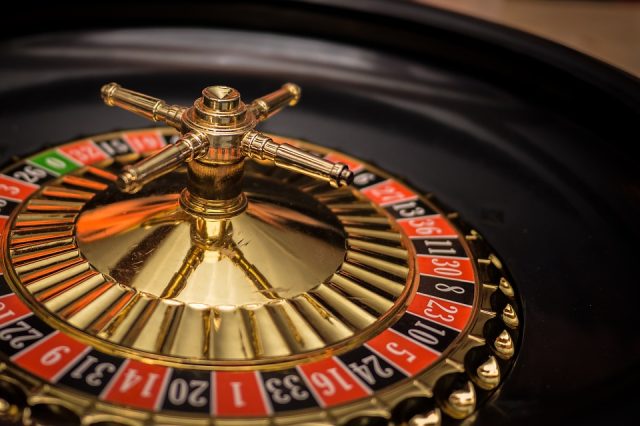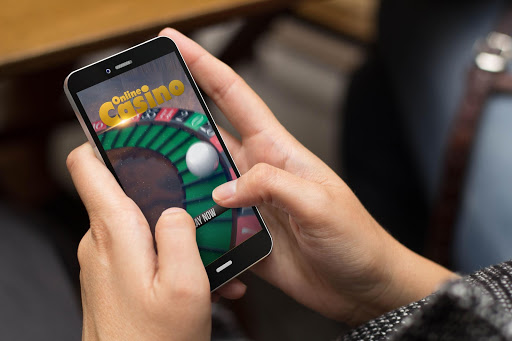Roulette is a game of chance. This game was created by the French mathematician Blaise Pascal in 1655. Roulette is a game of numbers – 0, 00, 1-36, and multiple bet selections available to players. Players are tasked with selecting a number, set of numbers, or selection of options during the wagering session, followed by the croupier’s announcement: ‘No More Bets!’
All winning bets are paid out, according to the pay table. The rules of each Roulette casino game variant determine the bet selections, minimum and maximum bets, payouts, and odds of each game. Frank Scoblete the well-known casino pro has written a very comprehensive guide on how to play roulette, including the mechanics of the game, bets, strategies, and bankroll management options for European Roulette, French Roulette and American Roulette games.
Different Roulette Variants

Each Roulette wheel is comprised of 3 unique divisions. These include the ball track, the base track, and the wheel. While it is possible to find dozens of Roulette games at casinos, the most popular variants are the big 3: European Roulette, French Roulette, and American Roulette.
The former two games are single-zero Roulette games. These Roulette wheels feature numbers: 0, 1 – 36. Originally, French and European Roulette games featured 0 and 00. These were gradually phased out to become single zero games. The house edge on a European Roulette game is 2.70%.
All Roulette wheels feature alternating red and black numbers. The European Roulette wheel numbers are as follows: 0-32-15-19-4-21-2-25-17-34-6-27-13-36-11-30-8-23-10-5-24-16-33-1-20-14-31-9-22-18-29-7-28-12-35-3-26. The 0 is green, and the other numbers are either red or black.
On an American double zero Roulette wheel, the clockwise configuration of numbers beginning with double zero is: 27-10-25-29-12-8-19-31-18-6-21-33-16-4-23-35-14-2-0-28-9-26-30-11-7-20-32-17-5-22-34-15-3-24-36-13-1. The 0s are both green. The American Roulette wheel features an extra digit (00), and a lower probability of any single number occurring at 1/38 or 2.63%. Over time, the French and European variants became staples in Europe while American Roulette was adopted in the US.
All the Bets in Roulette Games
The sum of numbers on a Roulette wheel is 666 – the Devil’s number. This has spawned a legacy of superstition, myth and fantasy. Roulette games are pervasive around the world. While the rules of play for Roulette variants are similar, payout percentages and minimum/maximum bets may change with these casino games. There are typically two broad categories of bets available: inside bets and outside bets.
High-Low, first dozen, second dozen, third dozen, red or black, odd or even are examples of outside bets. As a rule, players will enjoy much higher payouts on inside bets, although the odds of winning these bets is lower. Outside bets payouts feature odds close to 50-50 (red or black, odd or even, 1-18, or 19-36), but the 0s slant odds in favor of the house.
Outside bets are equally important in all Roulette variants. They include a combination of betting options such as Red or Black Bets with even money payouts (recall the green 0 and 00 make it favorable to the house), High or Low Bets (1-18 & 19-36), and the Odd or Even bet (players lose if 0 or 00 comes up).
Other important outside bets include the Dozens Bet. There are 12 numbers in each Dozens Bet (1-12, 13-24, 25-36), and the payout is 2:1. If the green 0 or 00 comes up, the player loses the bet. The final outside bet is the column bet. The column bet has a winning payout of 2:1, and players place wagers at the bottom of the column they believe will win on the current spin.
Inside bets include 6-number bets with a payout of 5:1. This bet is placed on the borders of 6 numbers. 5-number bets are only available on American Roulette wheels. Winnings are paid at 6:1 with a house edge of 7.89%. Experts do not recommend this bet since it is more profitable to wager on individual numbers. The four number bets are available if four numbers are located on a square. The payout is 8:1 on these bets.
Street bets a.k.a. trio bets have a payout of 11:1, and the bet is on three numbers. Split bets are placed between 2 numbers. The payout is 17:1 on these bets. Straight up bets are placed on individual numbers with a payout of 35:1, even though there are 37 numbers on a European/French Roulette wheel and 38 numbers on an American Roulette wheel. Incidentally, that’s where the house edge comes from!
Tips and Tricks for Playing Roulette Games

Roulette is a numbers game. For example, players with a preference for more betting selections may be inclined to select the double zero Roulette games. Remember that the house edge in American Roulette games is 5.26%.
Players looking for a player friendly Roulette variant will prefer either European Roulette or French Roulette. Both of these games have a house edge of 2.70%. With no 00, there are just 37 numbers on the wheel. In French Roulette the house edge can be whittled away to just 1.35%. This occurs if specific bets are placed such as En Prison and La Partage.
For example, if a player has an even money bet in play, and the green 0 lands, only half of the bet will be lost. This is known as La Partage. The En Prison rule by contrast states that the even money bet will remain in play if the Green 0 lands for the next spin. This gives players a second chance of winning. With even money bets, it is possible to enjoy a house edge of 1.35% with French Roulette.
Bankroll management is an effective component of an overall Roulette strategy. Players should enter gaming sessions with a specific bankroll in mind. Various bankroll management techniques like Martingale can be employed to assist players in their Roulette game play. This strategy requires players to double their losing bets on every spin. Once the betting limit is reached, Martingale becomes ineffective.
Additional Roulette Betting Systems and Strategies
Other systems include the Reverse Martingale, Fibonacci, James Bond system, Labouchere, Paroli Betting System, D’Alembert and Oscar’s Grind Strategy. Perhaps the most important takeaway for players is the following: There is no single-best Roulette strategy to prevent losses and maximize winnings.
Rather, players are encouraged to enter Roulette gaming sessions with a fixed budget, and the objective of having fun. Games with a low house edge (European Roulette or French Roulette) are preferred, and players are encouraged to understand the rules of play for each variant before wagering on real money online Roulette table games.
Free Roulette games are useful for players. It’s a good idea to begin wagering at low limit tables before graduating to high limit Roulette tables. Free Roulette games are readily available at online casinos. These games mimic authentic Las Vegas or Atlantic City table games with Flash or HTML 5 functionality.
Practicing with Online Roulette Table Games

The benefit of free Roulette games online is that players can practice different betting options at zero risk. Roulette is riddled with all sorts of intricacies. It is an art to determine how many bets to place on individual numbers, columns, and selections. Careful and methodical play is the best way to fully understand the rules and maximize the effectiveness of play.
The most important point to remember is the following: every spin is 100% independent of every other spin. Players invest tremendous energy in formulating Roulette systems, strategies, and betting practices. Some players swear by superstitious habits, while others eschew them in in favor of statistics and probability analysis.
The post How to Play Roulette Like a Professional appeared first on Dumb Little Man.











